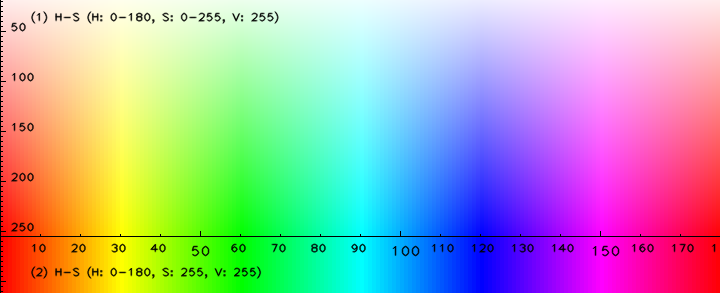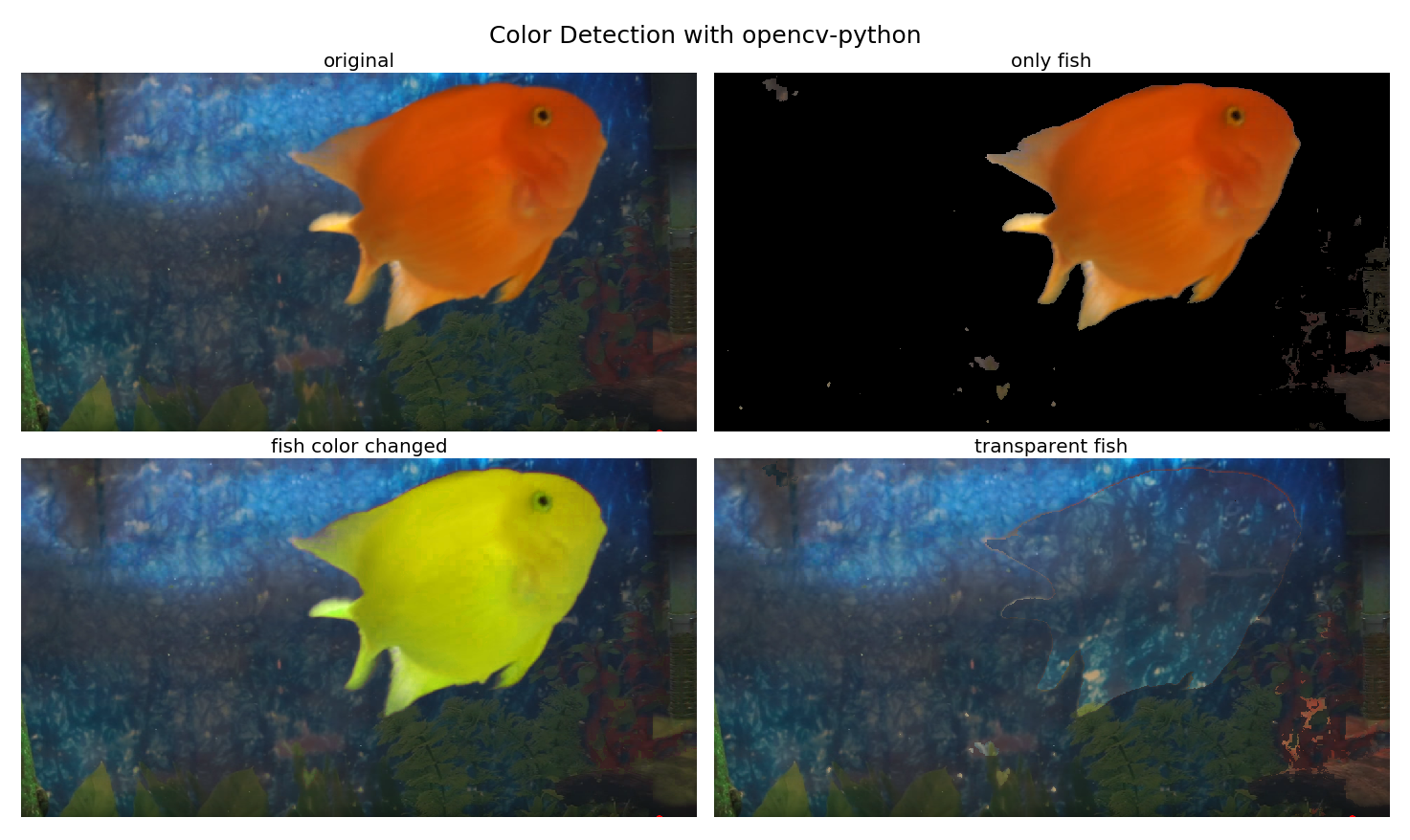The following screenshot shows an HSV colormap for fast color lookup. The x axis denotes hue, with values in (0,180), the y axis (1) denotes saturation with values in (0,255), and the y axis (2) corresponds to the hue values corresponding to S = 255 and V = 255. To locate a particular color in the colormap, just look up the corresponding H and S range, and then set the range of V as (25, 255). For example, the orange color of the fish we are interested in can be searched in the HSV range from (5, 75, 25) to (25, 255, 255), as observed here:
The inRange() function from OpenCV-Python was used for color detection. It accepts the HSV input image along with the color range (defined previously) as parameters.
cv2.inRange() accepts three parameters—the input image, and the lower and upper limits of the color to be detected, respectively. It returns a binary mask, where white pixels represent the pixels within the range and black pixels represent the one outside the range specified.
To change the color of the fish detected, it is sufficient to change the hue (color) channel value only; we don't need to touch the saturation and value channels.
The bitwise arithmetic with OpenCV-Python was used to extract the foreground/background.
Notice that the background image has slightly different colors from the fish image's background; otherwise, transparent fish would have literally disappeared (invisible cloaking!).
If you run the preceding code snippets and plot all of the images, you will get the following output:
Note that, in OpenCV-Python, an image in the RGB color space is stored in BGR format. If we want to display the image in proper colors, before using imshow() from Matplotlib (which expects the image in RGB format instead), we must convert the image colors with cv2.cvtColor(image, cv2.COLOR_BGR2RGB).



 Free Chapter
Free Chapter


